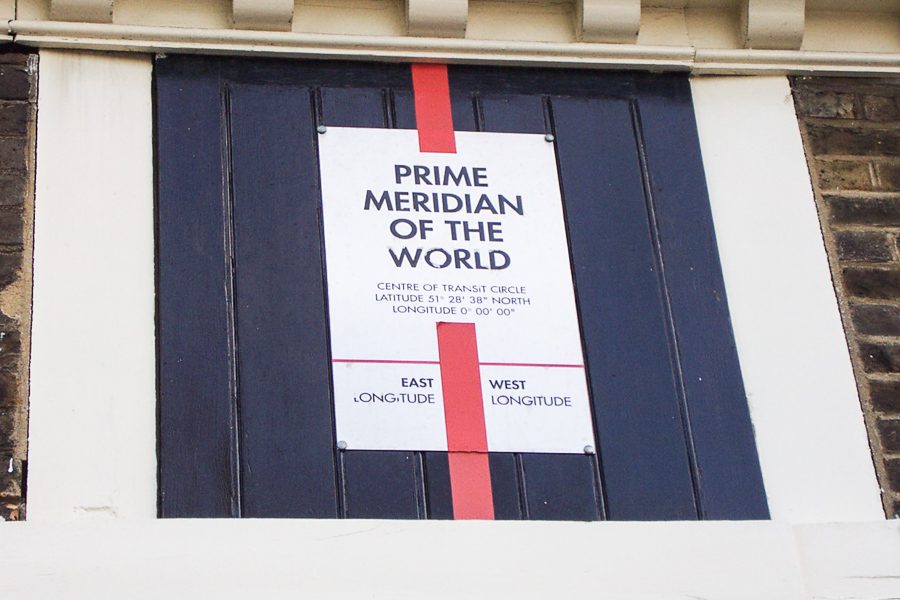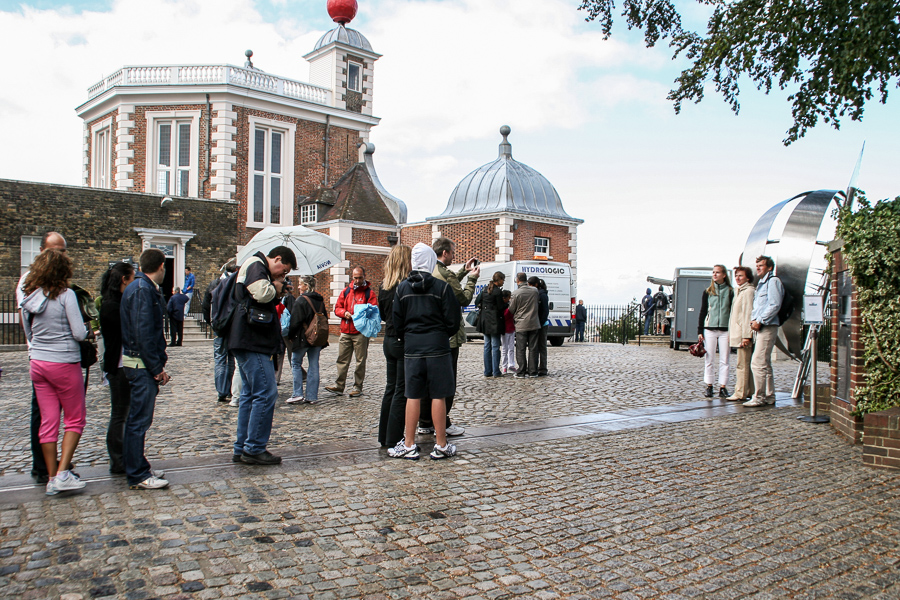Via IFLS, the Independent reported yesterday that the Prime Meridian is not at 0°W:
Every year, hundreds of thousands of tourists from all over the world descend on the Royal Observatory in Greenwich to pose for a photograph astride the Prime Meridian, the famous line which divides the eastern and western hemispheres of the earth.
There is just one problem: according to modern GPS systems, the line actually lies more than 100 metres to the east, cutting across a nondescript footpath in Greenwich Park near a litter bin. Now scientists have explained why – and it all comes down to advances in technology.
According to a newly published paper on the discrepancy, which has existed for many years, tourists who visit the observatory at Greenwich often discover that they “must walk east approximately 102 meters before their satellite navigation receivers indicate zero longitude”.
I've visited the Royal Greenwich Observatory a couple of times, first in 2001. This sign was inaccurate then, but most people didn't realize it:

If you look at that photo's metadata, you can see the GPS location that I added using the mapping feature of Adobe Lightroom. According to Google Maps, the monument is actually at 0°0'5"W.
But the Prime Meridian was always primarily a reference point for time, not space, and therefore is exactly in the right place. As a commenter on the IFLS post pointed out:
The article uses the term "wrong" when in actuality Greenwich Mean Time (GMT) is still based on the Prime Meridian, though with the network of atomic clocks it isn't used much anymore, however the marker itself is very much in the right place. It is just when you use the coordinates on a GPS you end up at a different location. This is because GPS doesn't use the Prime Meridian as a starting point. GPS uses multiple locations all across the globe as anchor points in which to triangulate a location from called the geodetic system. The system does not rely on fixed straight lines as we see on a map but rather contours to the physical and gravitational shape of the Earth. So in essence just as the gig line (navy term) of my shirt doesn't lie straight and flat across by oversized 50 year old belly neither does the imaginary geodetic lines. These imaginary lines if drawn on a map would deviate east and west and would appear wavy. In the end, it is not about being wrong (as the article implies) but rather why do the two systems not match up.
(See? Sometimes comments on the Internet are reasoned and mostly correct.)
And this is science, too. As the Royal Observatory's public astronomer Dr Marek Kukula told the Independent, “We’re forever telling this story, making the point that as we refine our measurements and get better technology of course these things change, because we want to have the best possible data."
As a bonus, here's a photo from my most recent visit, in 2009. Look at all the tourists lining up on the 5-seconds-west line:
